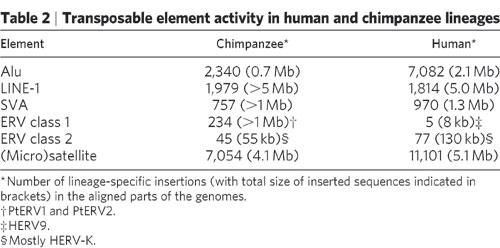PsychoSarah
Chaotic Neutral
I don't recall saying that where viruses insert themselves was entirely random, only that it is not consistent. For a virus to force a host cell to produce more viruses, they have to insert themselves very close to existing host genes. Since, in the case of the vast majority of genes there are multiple copies of them, viruses don't consistently insert next to the same one every time. Viruses can also make mistakes and insert themselves in a location that prevents them from forcing the cell to produce more virus, leaving the viral DNA to be fairly inert to begin with.in short...
but this is the main problem. if those ervs (actually ervs parts) are functional. then its possible that they are an integral part of the genome by the designer and not a result of a viral infections. its also possible that those are indeed a viral infections. but in this case- if they are functional then their position in the genome isnt random at all. so your main claim about shared ervs is problematic.
As for your comment that they would be integral parts of the genome and not viral insertions, there are aspects of many ERVs that would prevent that from making sense. From what I have read on them, most of the ones with a function act as promoters for genes, not as genes themselves. There is no need for the promoter to match up with viruses at all, since plenty of promoters in our body do their job just fine without having any relation to viral promoters. More importantly, since the retroviral genes can remain intact, we have genes which only function to repress those viral genes and prevent them from doing anything. There is no sense in doing this, as opposed to just designing us with the promoters and not the actual viral genes. That way, we wouldn't need genes that only function to prevent the viral genes from being active. Heck, even if those repressive genes have a secondary function, they'd do it just fine without the presence of the viral genes our bodies do not use.
We can literally observe viruses insert themselves into the DNA of other organisms, and observe what happens and if they impact phenotype. Since it is actually the promoter part of the virus and not the viral genes that are active in the cells, mutations have to occur that prevent the expression of the viral genes first before they can have any beneficial function. Otherwise, the viral promoters would only serve to activate the viral genes. You know, those viral genes that our bodies do not need and that we actually need to combat to retain normal function?you again assume that their function evolved after their insertions. but its only a belief, not a scientific claim.
Yeah, they are saying that there is no contamination FROM SPECIES THAT CURRENTLY EXIST. Basically, what has been demonstrated is that the DNA segment they found doesn't belong to any known, modern species. However, that does not mean that it belongs to the fossil species. Fossils can become contaminated with DNA at any stage of their formation, and between the time they are formed and when they are found.like i said above- not in this case:
"The possibility of contamination is extremely low because no PCR products were detected in any negative controls, and the laboratory at Washington State University in which DNA of M. latahensis was extracted, amplified, and sequenced never possessed samples of the four extant species of Magnolia that share an ndhF sequence with M. latahensis."
"To check for possible errors in the original sequence of S. albidum and to eliminate the possibility of contamination of the P. pseudocarolinensis sample from S. albidum, we newly determined the rbcL sequence of Sassafras albidum and compared it with the sequence from GenBank . The newly determined sequence was exactly the same as the sequence from GenBank. Thus, because the fossil sequence differs from all other sequences of Lauraceae reported to date, contamination seems highly unlikely."
They did what they could with such a small segment of DNA: tell what it doesn't belong to.
Upvote
0


